RevolverGuys are usually pretty savvy, and do a good job of selecting their equipment, but there’s one gear issue that tends to raise its head with frequency amongst handgunners, and it seems that RevolverGuys are not immune to it. That issue is selecting an appropriate belt for carrying a handgun.
If I had a nickel for every time that I’ve seen a handgun hanging on a belt that wasn’t up to the task, I wouldn’t have to pay range fees for the rest of my life. I don’t know if folks are using up all their mental energy on the gun, ammo, and holster selections, so there’s none left for choosing the belt, or if they just don’t think the belt is important, but I’ve seen some pretty pitiful straps out there being pressed into service as gun belts.
Now, we can’t expect all that much from all those bottom-feeding autoloader heathens, but there’s no excuse for a RevolverGuy to go about with his pants and his hogleg drooping around his hips, so let’s see if we can’t fix that for our wayward brethren.
I should probably clarify that in this case, I’m talking about a belt that’s going to be threaded through your belt loops and used to hold up your pants, in addition to your gear. There are other considerations for duty Sam Brownes, competition belts, or western rigs that go on top of your pants belt that we won’t address here. For this conversation, think about a belt you would wear for concealed carry, range duty, and the like.
Gun Belt 101
I suppose the first thing we need to talk about is how you’re going to carry your gun.
It’s been my experience that guns carried outside the waistband (OWB) need a stiffer belt that won’t sag or torque under the weight of the gun, but when you carry inside the waistband (IWB), you are often better served with a less rigid belt, or even a “soft” one.
A softer belt is useful for IWB carry because more of the gun’s weight is carried at or below the belt line, usually. This lower center of gravity helps to reduce the tipping effect we see when guns carried above the belt line (as you’ll commonly see in high ride OWB scabbards designed for concealment, instead of open carry) lean away from the body as a result of placing the center of gravity up high, at the end of a long moment arm.
The softer belt also helps to snug the IWB holster up against your body a little more effectively than a rigid belt does. Because a stiff belt doesn’t conform to your body shape as readily, it can bow out, and simply doesn’t do as good a job of pulling the IWB holster in.
For guns carried OWB, however, stiffer belts are necessary to prevent tipping with guns that are carried above the belt line, and they also help to prevent the gun from sagging too much (which is less of a concern with IWB holsters, because the holster has better support, since it’s sandwiched between the body and belt).
Materials
Leather is the traditional favorite of course, but we need to accept the fact that not all leather is created equal. Some grades of leather are soft and supple, while others are more rigid and inflexible. The softest leathers work great for gloves or dress shoes, or even for keeping your jeans about your waist, but don’t perform as well when you’re trying to hang several pounds of gear on them.
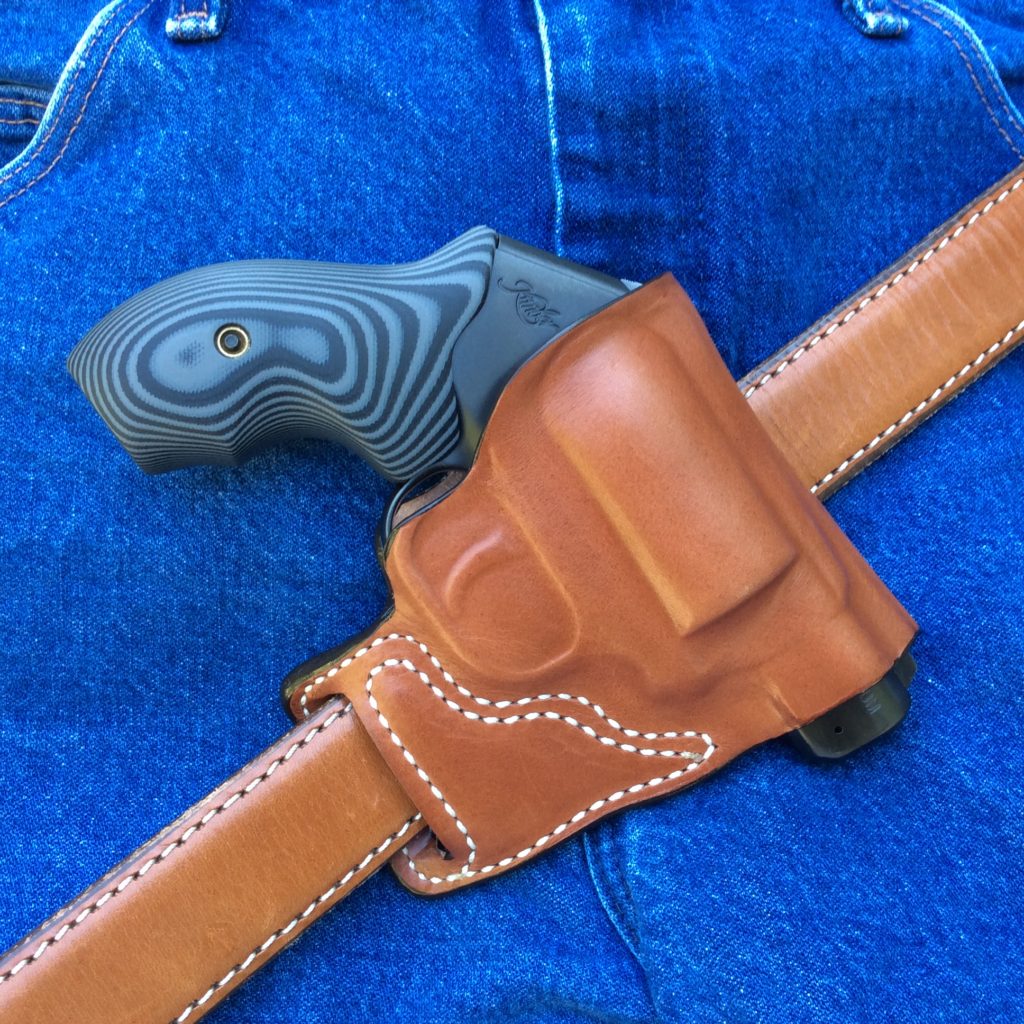
The leather we need for a gun belt is more robust than that. It needs to have some weight and rigidity to provide support, and it needs to be a cut that will resist stretching and breaking down too quickly. The leather used for a good gun belt (particularly when carrying OWB) is often the same quality cow or horse hide that we want to use for a good holster. You’re unlikely to find a belt made of this stuff in any department store, and will need to shop the places you get your holsters to get a belt of this quality.
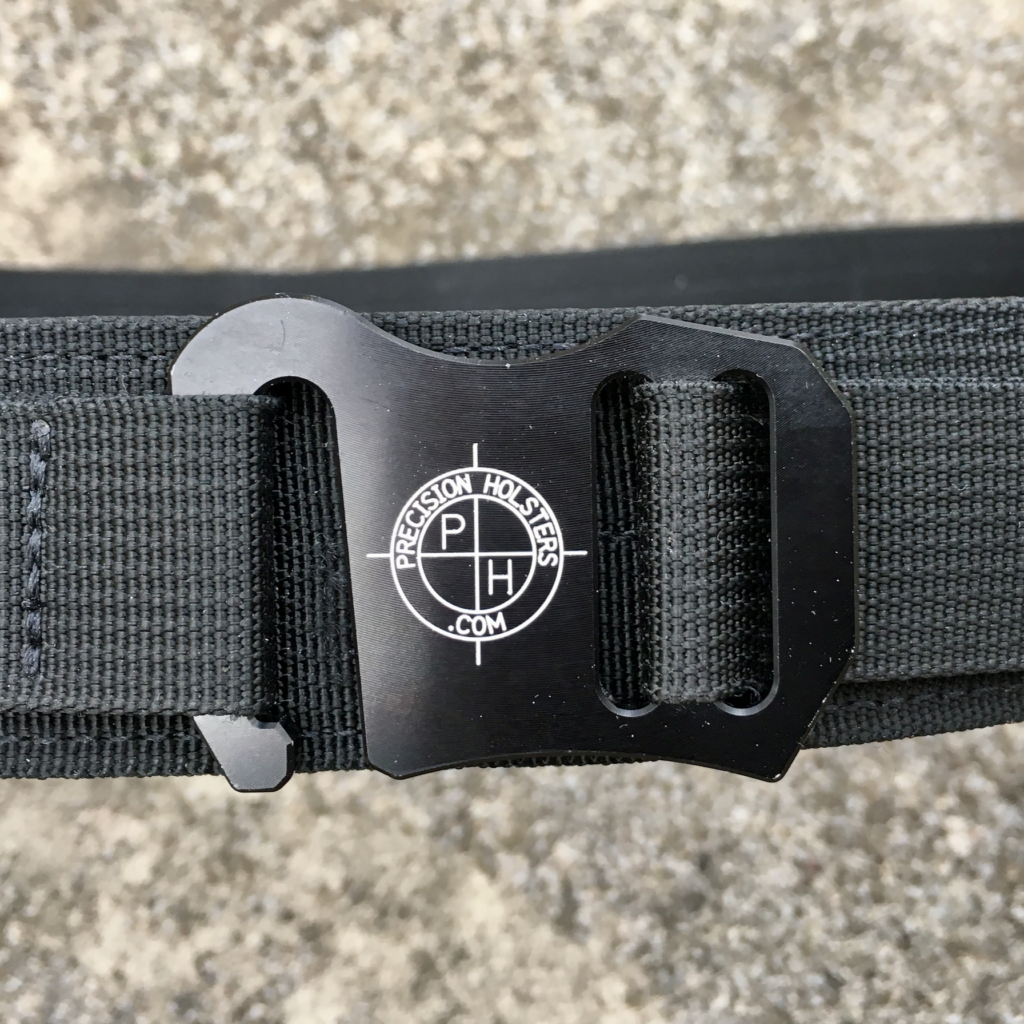
There are some fine synthetics that can be used for a gun belt as well, and I think we’re at the point now where fabric gun belts have actually superseded leather in popularity. The same warning applies, however—not all synthetics are created equal, and not all grades of synthetics are suitable for use as a gun belt. Nylon belts and the like usually need several layers of premium material (and frequently a stiffer material at the core) and careful stitching to make them sufficiently robust for the job, particularly for OWB carry.
Rigidity
We’ve hit on the fact that an IWB belt can be less rigid than an OWB belt, but we should take a closer look at this quality.
Rigidity is important because you don’t want the belt to sag excessively under the weight of your gun. If the belt sags, this can create a pressure point that will become uncomfortable, and for concealed carriers it will also cause a telltale asymmetry in the way your pants hang that can betray your armed status to someone who knows what they’re looking for. Additionally, if the belt is flimsy enough to allow the gun to sag, then it will also allow it to shift around during activity. When you reach for your gun to draw it, it might not be where it’s supposed to be.
So, a belt with sufficient rigidity will spread the weight of your equipment across a larger portion of the belt, and not allow it to concentrate in one spot. Furthermore, it will keep your gun exactly where it should be.
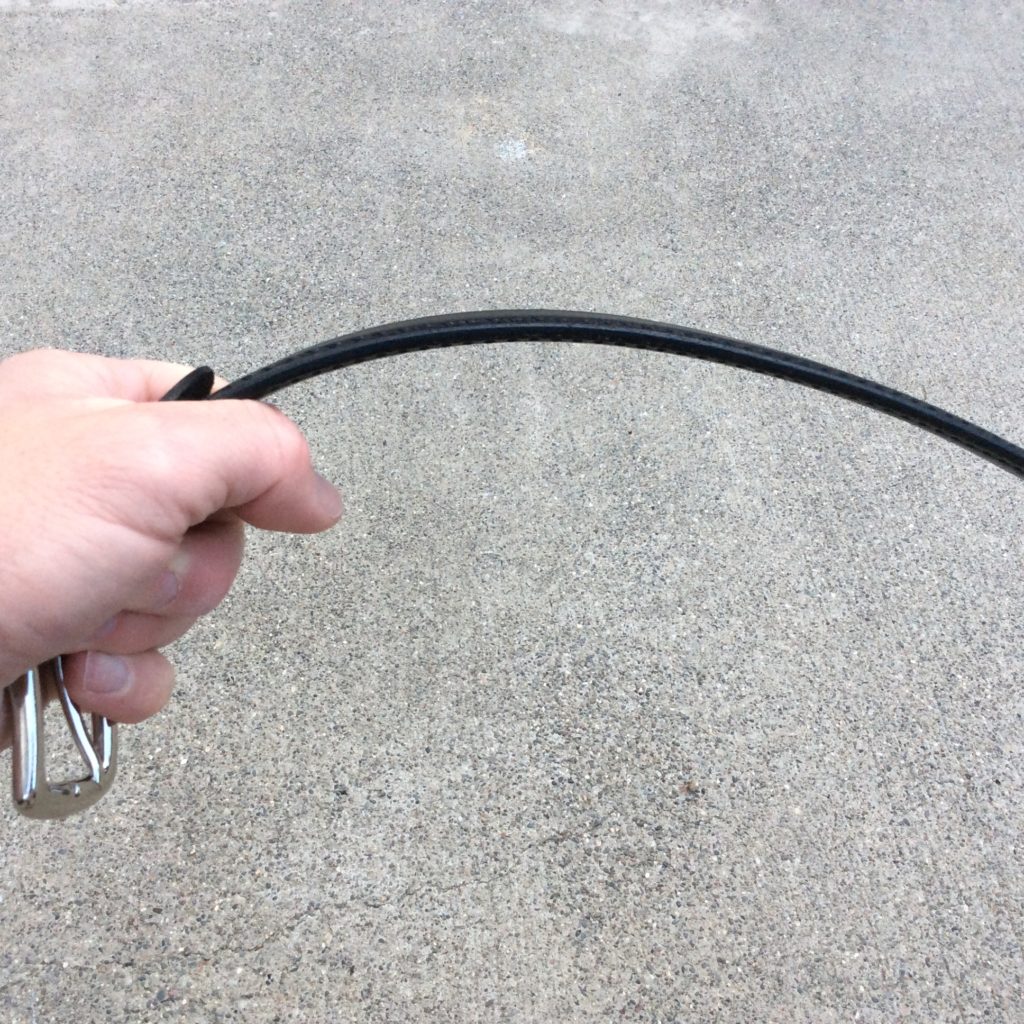
Now, rigidity is important, but you also have to balance it with comfort. You can get a belt that’s so stiff that it feels like you’re wearing an iron ring around your waist. The hard edges on some stiff belts (particularly the bottom edge) can dig into slender hips without much natural padding, so the trick is to find a belt that’s sufficiently rigid without it becoming a torture device.
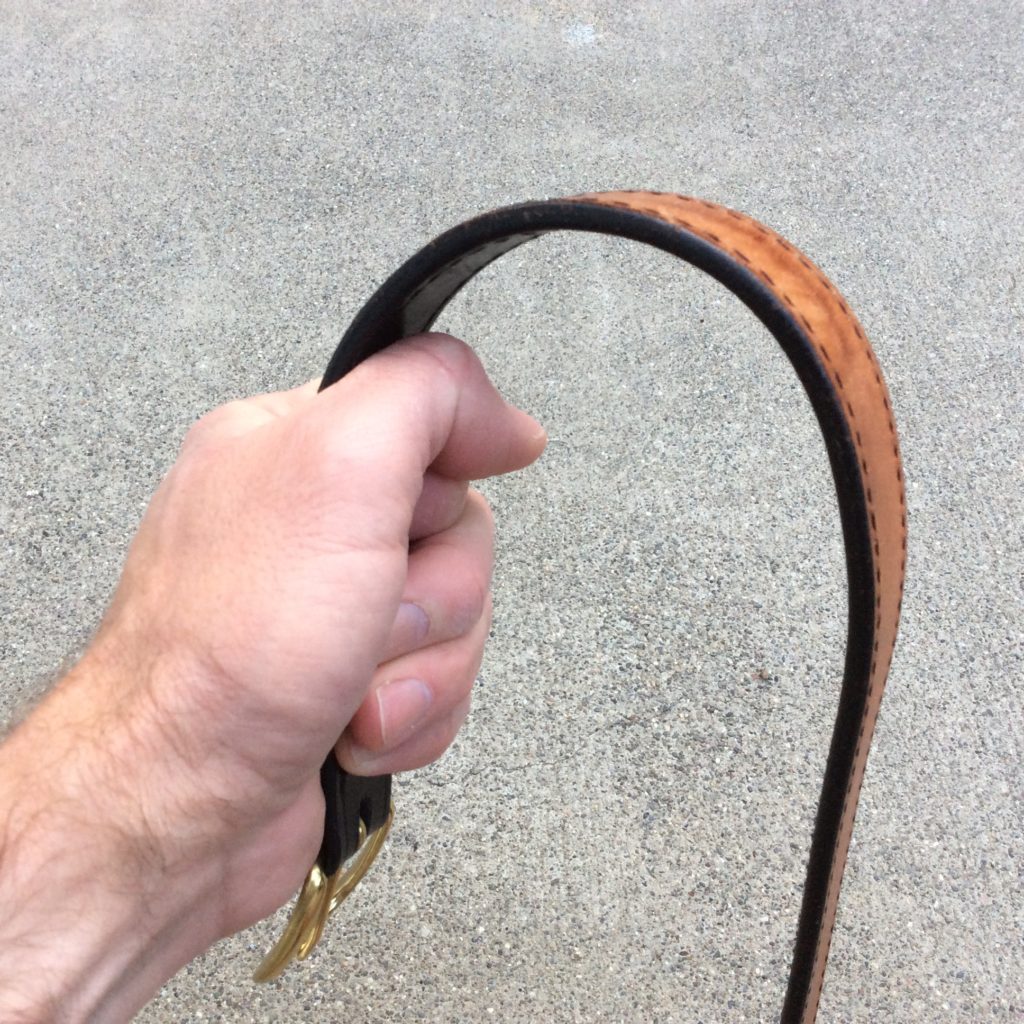
One thing that can help in this regard is to get a belt that’s cut on a curve. If you look at an old, worn leather belt, you’ll see that the belt has taken on a slight upward curve over time. This curve is a function of the way your hips flare out, and when the belt takes a set like this, it’s more comfortable to wear. Many holster makers offer leather belts that are cut on a curve, instead of straight, to help make them more comfortable from the very start. A belt like this will require less “break in” time before it feels good around the hips, particularly for female shooters with wider, curvier hips.
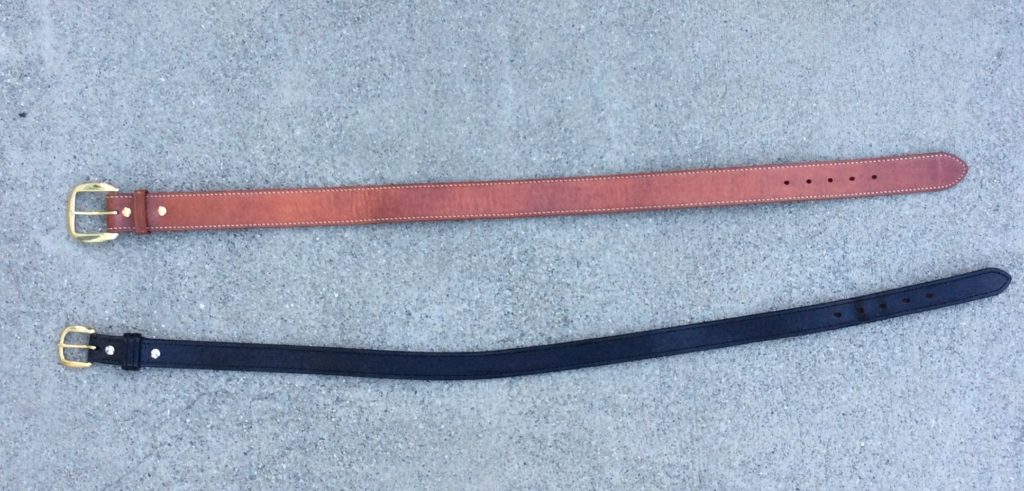
Measuring
Back when I started carrying guns, all gun belts were made of leather and used traditional buckles. Adjustable buckles with slides and the nylon, “rigger” style of belt hadn’t been born yet, so you had to pay close attention and order the proper size. Honestly, getting the right size is a little harder than you might think, which is one advantage of the newer, fabric styles over leather gun belts. The fabric belts also require less “break in” to feel comfortable.
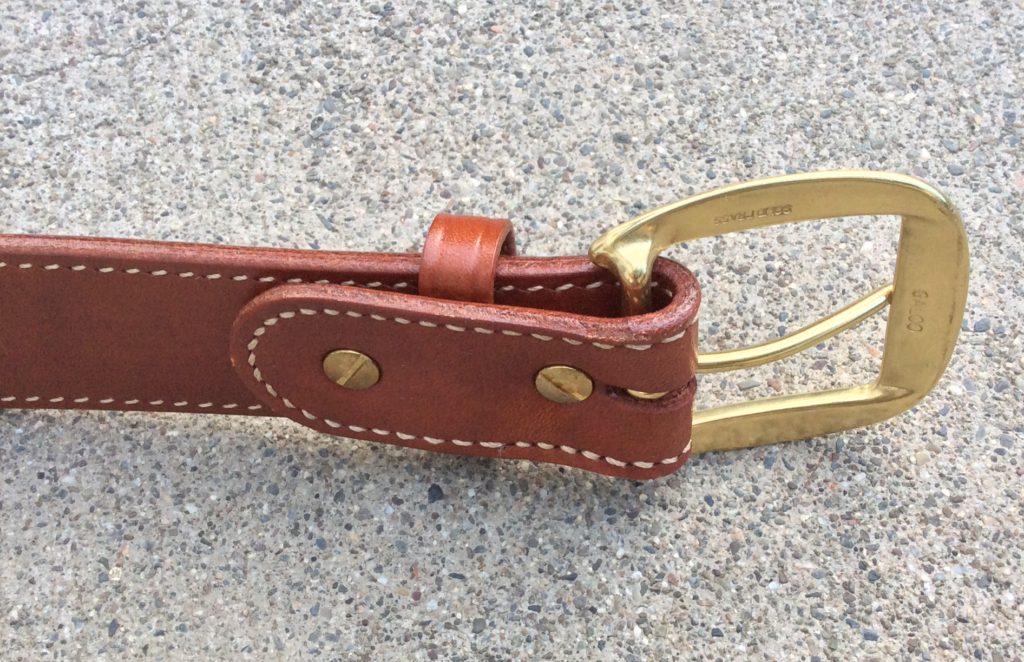
It’s traditional for holster and belt makers to advise that you should order a leather gun belt that’s two inches longer than your regular pants belt, to make up for the length that’s “lost” because of the gun and holster. The idea is that you’ll need a little extra length so the belt can thread through the holster loops of an outside the waistband (OWB) holster, or go over the top of a gun worn inside the waistband (IWB), and still be long enough to buckle up properly.
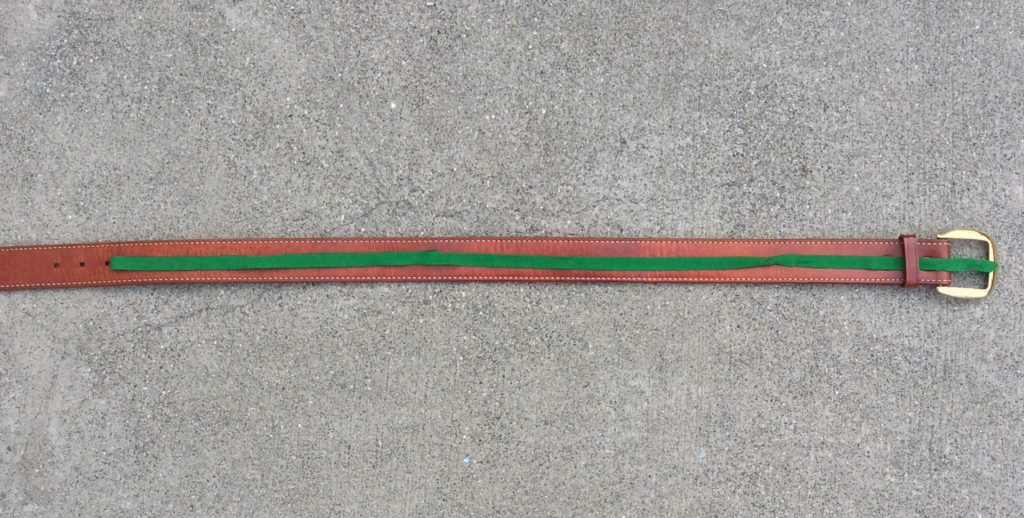
Over the years, I’ve found that two inches can be too much. A lot of it depends upon the style of holster and where the gun is worn. For instance, an OWB holster with a simple tunnel loop on the back won’t take up any extra length at all, but an OWB holster with fore and aft loops (like a “pancake” style) will eat up a little bit as the belt snakes through the loops and behind the pouch. Similarly, an IWB holster worn from about 3 O’ Clock to 5 O’ Clock (or 9 to 7 for you southpaws) will eat up some length, but an appendix IWB holster often won’t change a thing, because the holster simply fills a hollow, and doesn’t add to the distance around your waist.
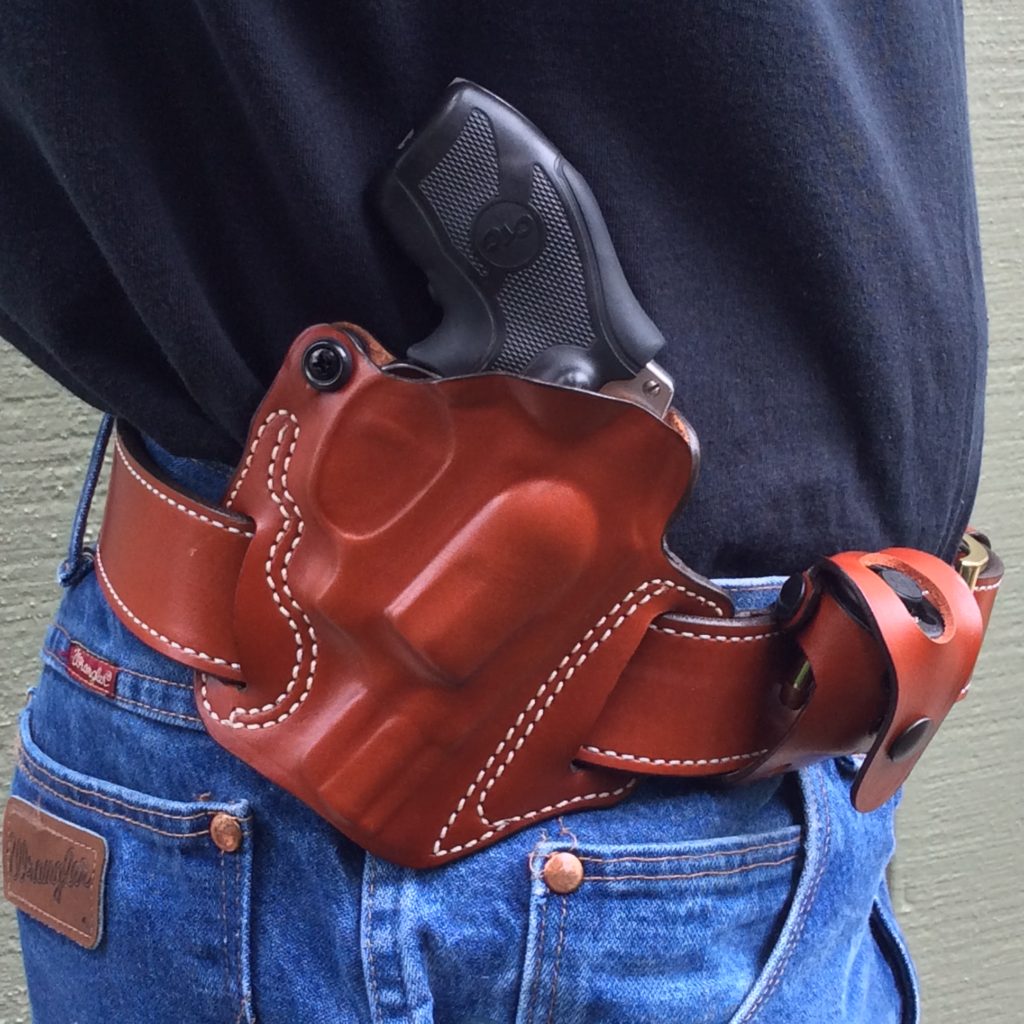
Another factor to consider is how tight you like your belt. I like to wear my pants belt a little on the loose side when I don’t have a holster on, but when I’m carrying a gun I like to wear the belt tighter, to keep all the gear from flopping around and shifting. Between that and the fact that I favor the appendix position for carry, I often don’t need to bump up a size when I buy my gun belts.
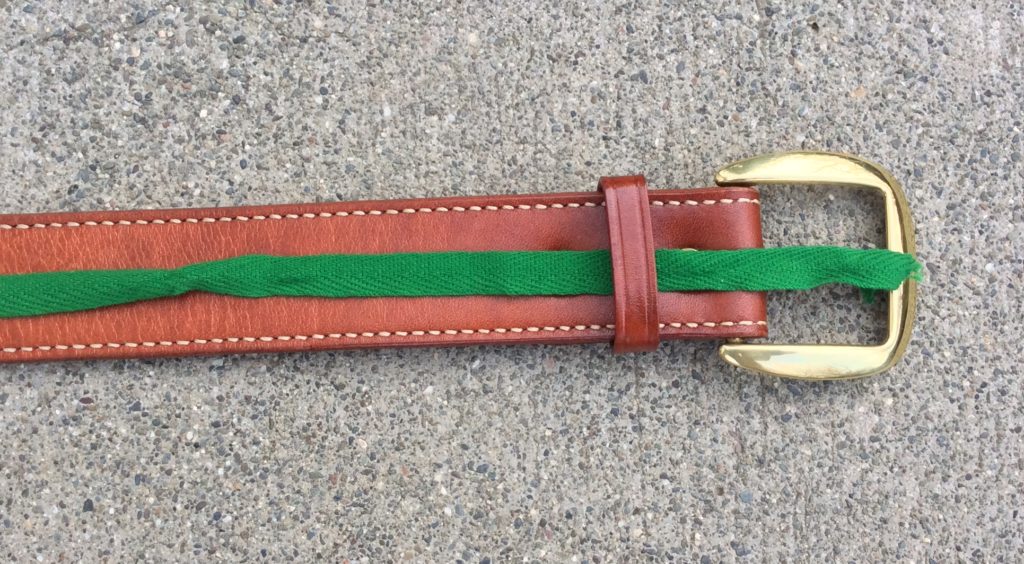
If you have a gun belt that fits you well already, your task of picking the right size just got easier. With a soft tape measure or a piece of string, measure the distance from the tip of the fork on your buckle to the hole that you use in your current belt. That’s your desired size. New leather belts are sized so that the length is measured from the tip of the fork on the buckle to the middle hole on the belt, so get the one that’s closest, realizing that you might have to go in or out one notch on the new belt to match it, especially before the new belt breaks in.
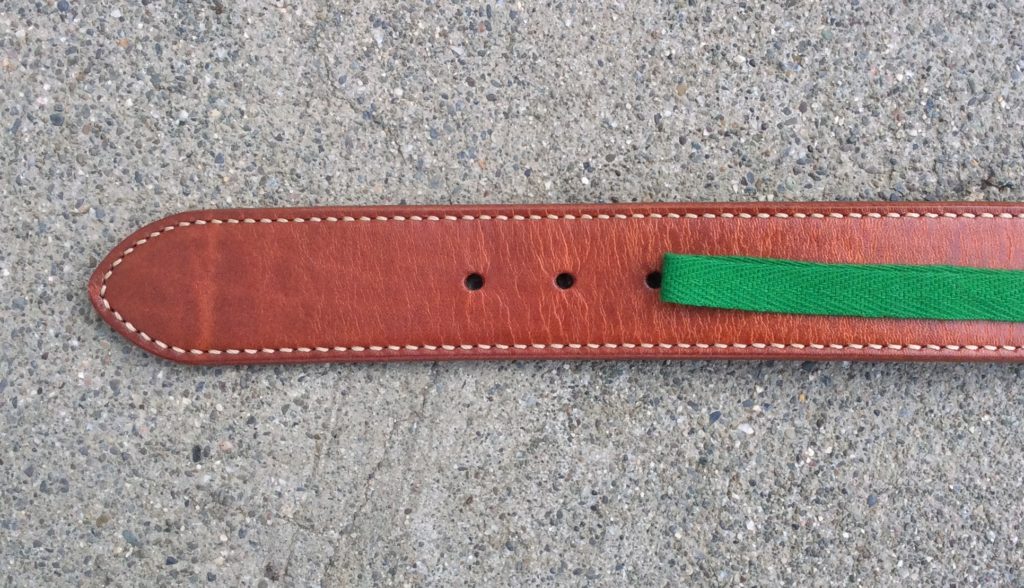
Width Matters
One critical factor that lots of folks overlook is selecting the proper belt width. The first thing to realize is that you want the width of the belt to match the width of the belt loops on your holster. An undersized belt will allow a holster with bigger loops to rock back and forth on the belt, constantly changing the angle that the gun butt is presented to your hand. It will also permit the holster to slide fore and aft easily. This unpredictable movement will complicate and slow your draw.
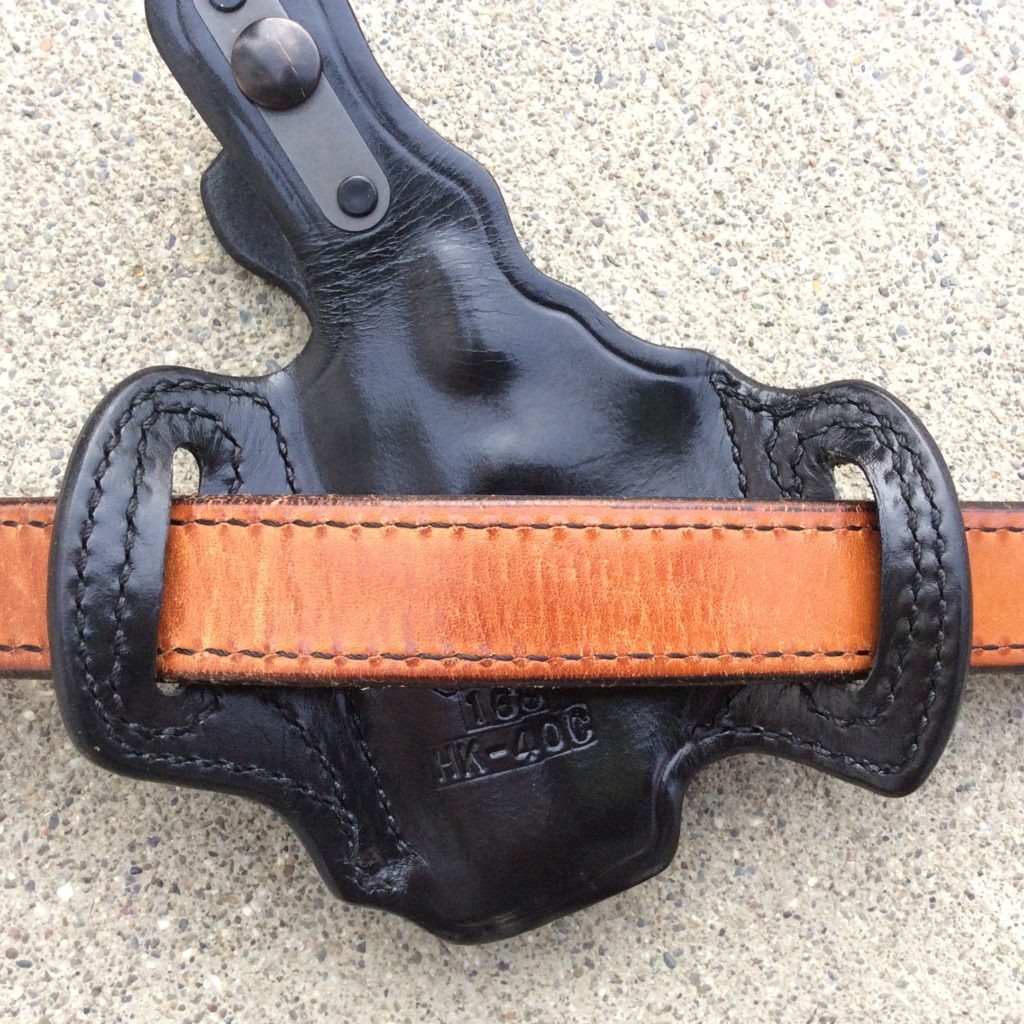
Additionally, the style of holster and the gun that you’re wearing must be considered when choosing the width of your gun belt. When the center of mass of your gun starts to ride appreciably above the belt line, then the belt width needs to increase to make the package stable. A high center of mass, combined with a narrow belt width, will result in the holstered gun tipping or rolling outboard, away from the body, which compromises comfort, concealability, and speed of draw. This gets exacerbated if the belt is made of materials that lack rigidity, as previously discussed.
For example, if you have a short barreled gun in a high riding OWB holster on your strong side, the center of mass is going to be well above the belt line. If you put this combination on a 1.25” width belt, or even a flimsy 1.75″ belt, it’s probably going to twist and allow the gun to tilt away from the body, because the belt isn’t wide or sturdy enough to keep the gun upright and tight against your side. A package like this requires a 1.75” width belt made of appropriate materials for the best stability.
That same setup might work better with a gun that has a longer barrel. A gun with a 4-5 inch barrel might ride OK on a narrower belt, because the center of mass will be lower, and the longer barrel will press against the side of the body and prevent the grip and frame from levering outwards. A 1.75” width belt would still be the best choice, but you might be able to get away with a 1.5” width belt in this OWB application.
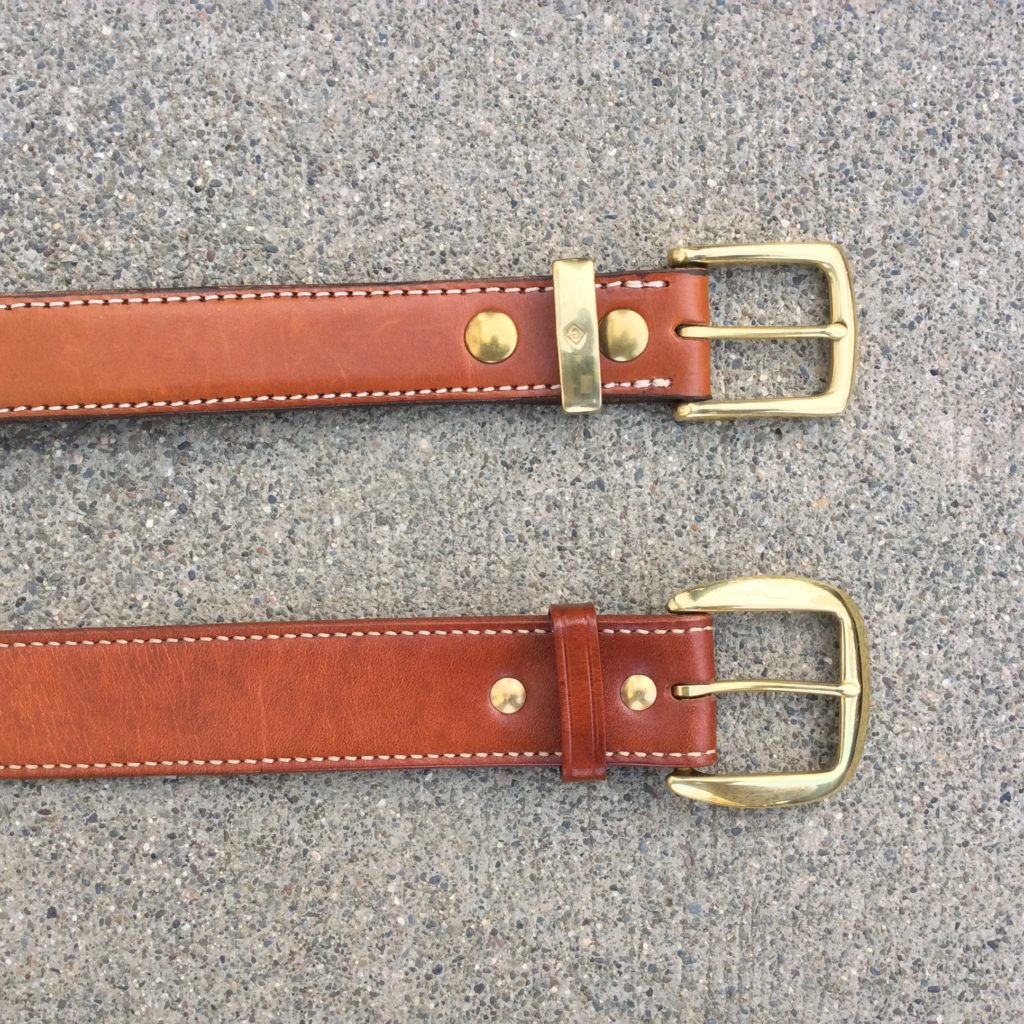
If you put the short barrel gun in an IWB holster, the center of mass is going to ride closer to the belt line. This lower ride height, coupled with the inward pressure of the belt going over the outside of the holster, may allow you to get away with a thinner width of belt. In my experience, a 1.5” belt is the smallest I would want to use, but you might be able to get away with a sturdy 1.25” gun belt, especially with a longer barrel on the gun.
One last thing to consider is the thickness of your belt. Many makers offer gun belts with dual layers of leather, which makes them stiffer and more resistant to twisting. Sometimes you can get away with using a thinner width of belt, by increasing the thickness of the belt to support the load and oppose the torque. This can be helpful in applications where you have to wear pants with smaller loops that may not accommodate belts over 1.5” wide, such as men’s suit pants or most women’s fashions.
Everything’s a Compromise
As I mentioned earlier, you may have to trade some capability for comfort. A wide and stiff gun belt will do a superior job of carrying your equipment and keeping it in place, but may prove to be too uncomfortable for extended wear, or incompatible with your clothing. Alternatively, the belt that feels most comfortable may not provide enough stability and support for your equipment. You’re going to have to experiment a little bit to find that happy medium that works for your body shape, your choice of gear, your carry style, your clothing, and your tolerance for discomfort.
Just remember what your objectives are. If you’re carrying a gun, you want it to be secure and you want to be able to access it quickly in the event of an emergency. If you’re carrying concealed, then it needs to stay hidden as well. Choose your gear with these priorities in mind, and you’ll be in good shape.
Resources:
Aker Leather
DeSantis Gunhide
Galco Gunleather

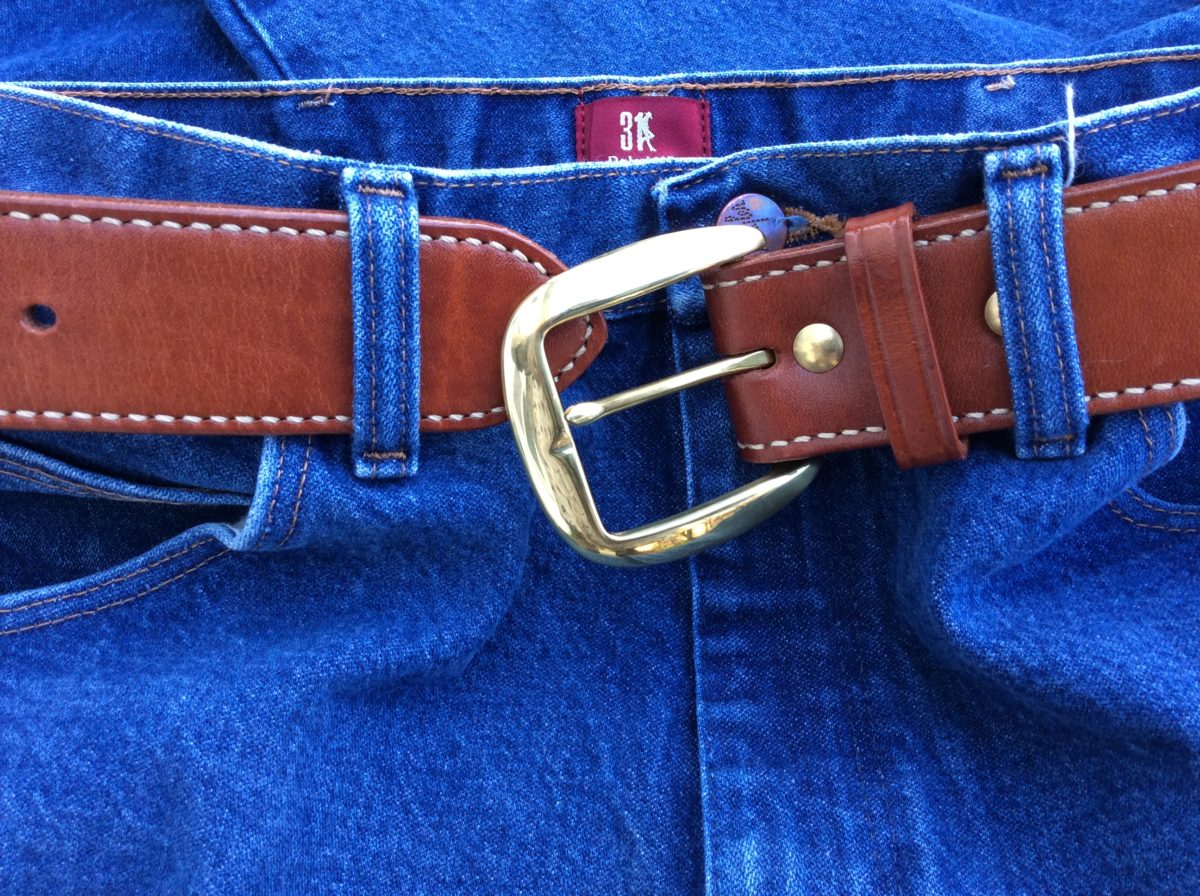
Good article, sir. I literally just got back from the field with my kids and unlimbered my hog leg. I have a love for S&W N frames and those revolvers do require some attention in the belt and holster department for sure. I wore a S&W model 58 today and have a 1.50″ hybrid belt from Lenwood to do the heavy lifting. When carrying an N frame, I do have to go a notch tighter but no one has asked why my face is blue yet. Take care. Curtis
Curtis, if your kids ever start misbehaving and you don’t know who to will that Model 58 to, I can help you out. ;^)
Of course, one look at your stern face and that thick gun belt would probably get them back in line. It’s probably a good thing for my tender rear end that my dad never discovered dual-layer belts–it might have taken days to sit down again after a behavior correction. Ha!
Useful, Mike, thank you. I do get a little paranoid that the heavy solid belt gives away that I am carrying, but I guess it’s a case of blending it well and carrying yourself with enough confidence or panache or something. I have only been made twice that I’m aware of in over a decade and not at all in the last five years so I think practice carrying is important as well. I’m going to have to get a Galco belt to try out. I didn’t know they made belts until reading your article about holsters (sheesh! Where was my head?) but now I’m interested.
Interesting comment about that, Riley. I’ve actually noticed that young men’s fashions are starting to trend 70s-style again, and thicker leather belts are “in” once more. That might work in your favor. Fashion can be regional, of course. In a lot of the western states, a “gun belt” wouldn’t look out of the norm, but I know lots of folks have worried about being made with a “cop belt” on, over the years. Since I mostly carry appendix, the belt is rarely visible anyhow, and I tend to dress in a style that’s best described as “LL Bean Outdoorsman,” so even on those occasions when my shirt is tucked in, the belt looks like it fits the rest of the package and doesn’t stand out. My military haircut, tactical folder, behavior, and body language are probably a bigger giveaway than my belt, anyhow.
Yeah, I’m not too worried about regular folks noticing anyway, that’s just how it goes sometimes. I don’t exactly act the part which helps a lot. I think the big thing is don’t get made by the terrorist beforehand. I want to be a surprise for him!
No one is looking to see if you’re carrying a gun. Wear what you want.
The Colonel is spot on with this posting. As a ‘baby’ cop in the early 1970s, I thought, “oh heck, wearing an N frame shouldn’t be THAT hard, after all, it rides on my 3″ duty belt. . .” WRONG!
Finding store bought belts may be okay with a 14 ounce J frame, but carrying anything substantial on that belt is not going to work. I want my belt to easily manage a load greater than what I would normally carry, that way I know it’s going to be up to the task.
Many years ago, I was introduced to a custom leather maker who had been an LEO in Alameda County (that’s Oakland SF Bay area for those in Brooklyn) who got into holster making as a hobby. (Sam Andrews, @ AndrewsLeather.com located in St Augustine, FL) Once I discovered that belts really could be made to accommodate the gun and extra ammunition, everything changed. I have different belts for IWB as opposed to OWB. Gun retention is paramount and having the right gear ensures no one but you knows you’re packing, especially a heavy duty belt made with Tiger Shark skin.
Some folks will spend $700+ on a gun, then only want to pay $25 for a holster and $10 for a belt. That’s like putting cheap Chinese tires on a Hennessy Corvette.
Sir,
Were you SFPD then? Interested because I grew up in the East Bay.. I can’t say I would want to work in that environment, but more power to you! I’m on the job in Ohio myself. What weapon did they issue in those days?
Negative. Was with the state in Florida. Met Sam Andrews through a sheriff’s dept captain. First issued sidearm was an N-frame nickel S&W M28 .357 Magnum with 5″ barrel, carried cross draw (suicide draw) on 3″ belts, all made by Mixon. The gun had been re-re-reissued a few times before I got it. Later in the 70s, the S&W M66 came on board, and many lumbar muscles were joyful. Eventually the M92 Berettas came along shortly after the Army adopted them, then Glocks. The S&W M66 remains a sweetheart of mine.
Stay safe, and remember, the objective is to go home at the end of your shift. : )
Roger that Sir! Thanks for serving. Wish I had worked with a revolver on the belt not just for backup… born a little too late.
Great to hear from you Sir! I LOVE the Corvette analogy! Wish I’d been clever enough to come up with that myself.
I don’t take it to quite the extreme that this article implies, but a semi-decent belt definitely helps. My usual belt is one I made from a Weaver Leather belt blank(http://www.weaverleathersupply.com/catalog/item-detail/7564/001/158). It is only 1.25″ wide, and it isn’t as stiff as the belt in this article, but it works for me and 27oz of SP101. It also helps that I make my own holsters with my specific belt in mind. If I was buying holsters, I would need at least a 1.5″ belt because the belt loops start at that point and get larger from there.
I do notice the issue of short barreled guns and high ride holsters leading to the gun rolling out. When I want to carry in that fashion, I switch to my Beltman Gun Belt. It is still only 1.25″ wide, but it is a full 1/4″ thick and stiff enough to avoid the rolling issue with my shorter SP101. Unfortunately, it starts to hurt after a while, so I don’t like using it too often.
I think it is easy to get overly worked up about belt selection, but I definitely agree you will not be happy or comfortable if you just go to Walmart and buy a belt.
Thanks for shining some light on a subject that definitely receives too little attention, Mike. A good belt closes the circle, both literally and figuratively.
My dad worked plain clothes for years and loved the little Colt Detective Special that matched up pretty well with wearing a suit every day. He was rather less smitten with the larger and heavier S&W Model 65 his department issued late in his career. I found that curious at the time. Who wouldn’t want a more potent sidearm?
With time I came to understand it, of course. Turns out, young men don’t know much. And belts matter.
For years I’ve worn a brace of old Bianchi basketweave models. a 1.5″ belt if I’m wearing dockers or similar casual pants; a 1.75″ belt if it’s jeans or cargo pants or tactical trousers. Even today, after all these years, I still find myself occasionally testing the limits of that smaller 1.5″ belt. With a full-sized, steel gun it’s not hard to do.
I did have a pleasant surprise a few months ago. The Crossbreed Instructor’s belt (https://www.midwayusa.com/product/749916/crossbreed-instructor-belt-1-1-2-leather-velcro-closure?utm_medium=email&utm_source=service&utm_campaign=shipping-confirmation&utm_content=product-shipped-today-product-description-link ) has a velcro closure rather than the traditional buckle. Being rather old-school, I wasn’t too keen on that. But I have to say, it works amazingly well… eliminating that aggravating “this hole is a little too loose but the next one is a little too tight” conundrum. It’s the thickest leather belt I’ve ever owned, by a mile. And that imparts a remarkable stability to heavier handguns.
It’s quickly become my favorite carry belt.
Jeff, thanks for the kind words and for the great point out to the Crossbreed belt. That looks like a pretty neat design, and I can see where the velcro closure would come in handy, especially at Sunday brunch. ;^)
Mike, are you familiar with the Wilderness Instructor Belt from thewilderness.com?
It’s available in different widths and levels of stiffness, including a super-stiff Combat Shooter’s Model that includes a sewn-in plastic liner.
The belt and buckle are designed to withstand a minimum of 5,900 pounds of static stress, so in an emergency they can be used as “rescue equipment”.
I especially like the fact that they’re infinitely adjustable: rather than having to go from belt hole to belt hole, you can cinch them exactly as much as needed to find that ‘sweet spot’ of just the right tightness.
Hi Bill! Yes, those are excellent belts, and I’ve recommended them to many. Very high quality, and they fix a lot of the traditional issues with leather (break in, sizing, etc.). I don’t prefer the style though, because I’m a leather kind of guy. One of those would look right at home on Justin’s waist! ;^)
Mike, excellent article.
I luckily discovered pretty quickly that a good belt is a must. Now holsters on the other hand have been a challenge. I still have the stereotypical drawer full.
I have found at least for me that a belt 4” more than my waist size offers the most flexibility since I tend to switch a lot between IWB, OWB, and occasionally appendix carry.
My favorite belt right now is a Beltman leather with the stiffener wedged in between the two layers. They produce a fantastic product.
I always purchase 1.5” width as they tend to work with all pants except some docker type or real dressy slacks. I believe it strikes a good balance between the (in my opinion) too thin 1.25” and extremely wide 2.00”.
Anyhow, keep up the great work!
I have always told my academy students that a good belt is essential for successful off duty/ plainclothes carry success.
I have two 1.5 inch belts from Wild Bill’s Concealment Leather that have served me well for years carrying compact and full size Glock .40 pistols concealed. With the Glock sport/combat polymer holster and two of their polymer mag pouches, I can carry concealed a capable firearm and two full length Glock mags under a one size larger polo shirt or sweater anytime I am dressed with pants that can accept a belt.
A good belt should be mission critical to ANY guy, but especially a RevolverGuy. And since we’re naming names, I wanted to submit a couple. I’ve been wearing 5.11 Tactical 1.75″ Operator belts exclusively for the last eight years as daily wear/carry. Nylon webbing belt with an infinitely adjustable stainless buckle and velcro stay for the tag end. Reinforced velcro outer portion at the 3 to 5 o’clock position for stabilizing a holster. I’ve rotated two belts (black and coyote brown) over this time and they are both as good as new. I highly recommend this belt and I think it comes in other widths for those less committed.
I thought I would never change belts but I recently discovered the Ares Aegis belt and it is my new go-to belt for EDC. I can’t believe how much I like this belt, though it is expensive at $100. Infinitely adjustable on the fly, NO VELCRO (which I prefer), probably twice as stiff as the Operator while being just a 1.5-inch. I also find that even with holsters that will fit 1.75-inch, they ride better on this 1.5-inch belt. They have an enhanced version that adds another layer of webbing for stiffness, but I can’t imagine needing that one. Obviously not leather or basic nylon, this belt is made of “proprietary scuba webbing”. Purchased mine from Tulster, LLC at amazon but the website is aresgear.com